All about the sofa

Today, everyone has the opportunity to furnish their own home with any furniture in order to achieve the uniqueness of the interior and increase the comfort of the room. For a living room or bedroom, an excellent solution would be sofa, but not everyone correctly understands what kind of piece of furniture it is.




What it is?
In everyday life, sofas and other similar types of furniture are often called sofas, but in fact, each of the names has a clear definition that allows not to confuse the named pieces of furniture with each other. The sofa really looks like a sofa, but with its own specific character - it has both armrests and a back, but they are of the same height.
At the same time, the sofa is in its original form does not unfold, because it is intended exclusively for daytime relaxation in a sitting position - that is why it is so appropriate in the living room. Nevertheless, these days, designers often experiment with shape, crossing the sofa with other similar home furnishings.



The sofa was invented in the East, and its short name from Arabic is translated by a very long construction - "a pillow on a camel's saddle." The original version of such furniture suggested that one should sit down rather low, while the seat was covered with a large number of pillows in which one could drown.
Like any other furniture in past centuries, the sofa was mostly found in wealthy houses, where it was appropriately decorated - it was upholstered with leather, silk or even carpets, while the base was made of expensive types of wood like larch or cedar.At the same time, pillows could be stuffed with horsehair or sheep's wool - then they kept their shape better and did not allow them to drown uncontrollably in them.



The sofa came to Europe only in the 18th century, but it quickly fell in love with the local connoisseurs of luxury, and today it can be found in almost any country in the world.
How is it different from other types of furniture?
For a person who is not very well versed in furniture, all "sofas" are the same. However, then you should not be surprised if it turns out that the chosen furniture accessory does not really meet expectations and seems inconvenient or impractical, because there is still a difference between the varieties.

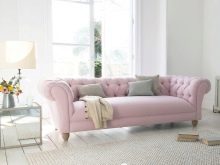

First of all, let's figure out how the sofa differs from the sofa itself. We have already talked about what the first one is - initially it designed primarily for sitting, this is supported by its comparative compactness, and relative rigidity, and the inability to unfold. The classic sofa is noticeably larger, and his back is noticeably higher than the armrests.
You can also sit on it - for this, the pillows are even divided so as to form, as it were, a separate place for each person. In the same time it is much softer, and it is much more comfortable to lie on it. In addition, the sofa almost always folds out, turning into a spacious bed, and although some sofa models today can do this too, in terms of functionality, they are still much inferior, gaining in compactness.



There are differences from the ottoman, which is also often called the ottoman. This piece of furniture has an even more different meaning - there is no back at all, or it is framed with pillows. At the same time, the width of the ottoman was initially truly enormous, and only over time this piece of home furnishings narrowed, adjusting to the fact that it would be necessary to stand not only in the mansion.
Ottoman armrests are possible but not required. Translated from Persian and Turkish, the word "ottoman" means "board", therefore, originally an ottoman is a rather tough piece of furniture, which was covered with cloth or carpets. In fact, it is something like a reclining sofa or a semi-raised bed.



Couch - another type of furniture that is incorrectly confused with a sofa. The couch is designed exactly for the fact that they will lie on it, while it designed for one person. Taking into account its “recumbent” specificity, it can be equipped with a headrest or a backrest at the headboard, however these details are optional. It usually does not differ in outstanding softness.
Each of the readers saw a lot of examples of the couch - they are the ones that stand in doctors and massage rooms.

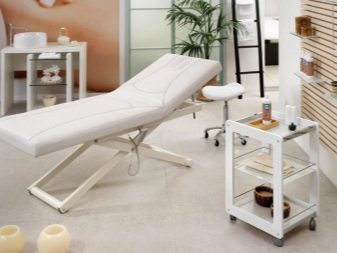
Species overview
Modern sofa - the concept is very extensible, therefore experts in the field of furniture were not too lazy to come up with a simple classification of such items. To make it easier not to make a mistake when making a purchase, let's briefly figure out what options are offered.



By form
WITH classic sofa everything is clear - it was low, with a long, but at the same time rather narrow seat, which made it possible to accommodate several sitting next to each other. Today, the so-called eurosophus - in fact, a sofa in the broad sense of this term, for which there are no strict requirements.
Thanks to this, it can even be angularwhen its back is not straight, but curved at a right angle in the middle or anywhere else. Such a solution is today quite actively used in small kitchens; it can also be found in various public institutions.


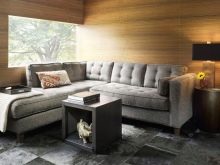
Besides, the sofa does not have to be long - modern designers have thoroughly rethought the original idea and even offer such strange solutions as a sofa chair with a pull-out berth. Not only is it a full-fledged transformer, thanks to which we are talking about a sofa rather than a sofa, but it is also a single-seater - even in a sitting or lying position! When folded, this design is extremely compact and does not differ in any way from a comfortable chair, and when unfolded converts into a small single bed with armrests and a headboard.
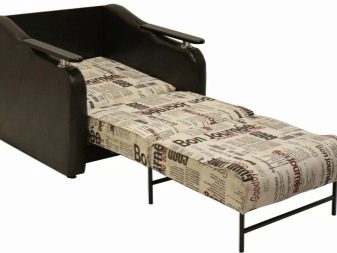
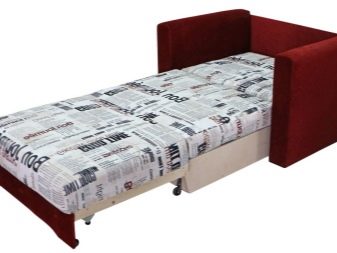
By the mechanism of transformation
According to the generally accepted definition, a sofa does not have any transformation mechanism or it should be implemented as primitively as possible.Modern designers have long forgotten about this rule and agree to call any complex structure a sofa, especially since in Western Europe it is generally not customary to separate a sofa and a sofa as two concepts.



In most cases, modern the folding sofa belongs to the type of furniture that is also called the eurobook. It is equipped with a lifting top layer, which is turned over and set back to a horizontal position, but already slightly lower, next to the bottom layer - this creates a spacious two- or even three-bed sofa. In recent decades, such a solution has become very popular in small apartments, where it is not possible to provide a large number of sleeping places while maintaining a large free space.
The same solution is popular among hosts who like to regularly receive a large number of guests.

As an alternative the top layer may not topple over, and the additional surface "slides out" of the case, before being hidden in it. Such a solution is considered not very popular, because it does not allow providing an integral surface at the same level, and can also create significant pressure on the supports and over time, it can tilt, especially with active use.

In a manner the transformation is also achieved thanks to the removable cushions. During the day, the pillows are located closer to the back, allowing seated people to lean back comfortably and have a little rest, but because of this, the lying area turns out to be too narrow, insufficient for a comfortable position of at least one adult.
At night, the pillows are either removed from the "sleeping" surface altogether, or moved to the headboard, where they function as ordinary pillows. Due to their absence, additional space is freed up for sleeping, and the sleeper can be accommodated with due comfort.



Dimensions (edit)
With the dimensions of the optimal sofa, each buyer determines independently, starting from the amount of free space in your own home and the objective need to create a certain number of places for landing and sleeping.



Smallest mini sofa - this is the aforementioned sofa chair, which, for obvious reasons, is a single bed. Assembled seat width here does not always exceed 60 cm, therefore, the structure can be pushed into any corner. At the same time, the buyer should understand that some models are so compact that a large person simply cannot fit in them.


One and a half sofa is quite rare, because in most cases it is not suitable for an adequate fit of several people and can only be Eurobook, and here double and even three-bedroom are quite common. Their folding mechanism can be implemented in different ways, however, when folded, they are always at least one and a half times more compact than when unfolded.



Materials (edit)
Convenience, durability, ease of maintenance and much more depend on what materials were used in the manufacture of the sofa.



It is worth starting with those materials that are traditionally used to create the frame of furniture. Originally a sofa at its core wooden, moreover, made of expensive wood species.
Nowadays, for most manufacturers this is impractical, because they are guided even by buyers with an average or low income, because the frame is often MDF or cheaper, but less reliable tree species.


Alternatively, other materials can be used to make the base of the sofa. Metal the component is present in most models today - if not in the form of the frame itself, then at least as the material of the springs that ensure the elasticity of the surface. In pursuit of environmental friendliness, some manufacturers make furniture frames even from rattan - there is no doubt about the reliability of this material, it has repeatedly shown itself from the best side.


An important element of any sofa is upholstery - it should be soft and pleasant to the touch, but at the same time durable, resistant to various types of damage and aesthetically pleasing, as well as convenient for regular hygiene procedures. From this point of view, one of the most popular solutions remains leather - such an upholstery is practically eternal, but at the same time it does not absorb dirt and can only be wiped off, but this will happen only after many years. A huge disadvantage of leather upholstery is that it has a very serious impact on the cost of a sofa.



In view of this, upholstery is most often used fabrics, and not natural, but synthetic or semi-synthetic. This is understandable - such materials are less susceptible to various negative environmental factors, do not wrinkle, are not afraid of brushing, wiping, and the effects of various detergents. The most thoughtful manufacturer will definitely equip their furniture removable covers, in order to further simplify the cleaning procedure for the consumer, but if you still cannot remove the cover, give preference flock upholstery.

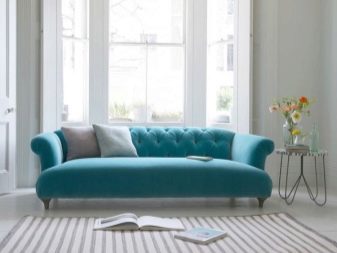
Styles
Furniture these days can no longer be limited to performing only direct functions - among other things, it must also be aesthetically attractive, and for this it is necessary to fit into the overall interior. In general it is not that difficult - it is necessary either to select the color scheme of the product to match the main color scheme of the room, or to make the sofa an accent - a contrasting color that goes well with the main one. It should be remembered that the sofa itself cannot be the only accent - being a fairly large product, it should overlap with other, smaller interior details.
Let's say the option when the sofa itself is an accent, and the pillows, on the contrary, are matched to the overall design.


Each manufacturer has models that fit perfectly into the interiors of the most popular styles. For example, classic interior never rests on poverty - on the contrary, he always emphasizes the wealth and wealth of the owner of the home. Everything here should be luxurious; the use of modest furnishings in the interior is not allowed. And even if in fact all the design elements were not that expensive, they should at least give the impression of high cost.
It is not surprising that the optimal sofa in this situation should be upholstered in expensive fabric with embossing or embroidery. Patterns are allowed, as well as monochromatic designs, but something more complex is unacceptable. According to the established tradition, the colors of chic are purple-red and gold, but here you really need to look at how the furniture will fit into the overall design of the room. Of course, those materials that simply did not exist in the old days cannot and should not be used - in the case of a sofa, this is primarily synthetic upholstery.




Modern furniture has completely different requirements. Modernist design in principle, it is focused not on ostentatious luxury, but on the utmost simplicity of design with maximum functionality. This means that the sofa should also have simple lines, without unnecessary bends and decorations.
And also she does not need beautiful patterns, but additional functionality will be very appropriate, because this is the norm for this style. The use of modern materials is only welcome here, while leather upholstery, for example, will look too cozy in the cold atmosphere of some hi-tech.



Today, you can find more original design solutions that not only correspond to a certain style, but will even fit into the original interior, shining with non-banality.Another thing is that it is much more difficult to find such furniture, and in many cases it remains only to order its production for a lot of money.




Accessories
The classic antique sofa was a frame with upholstery, which was not a problem for a wealthy owner to replace. Nowadays, many manufacturers are trying to move away from the production of complete furniture, understanding: Taking care of your accessories will be much easier and more convenient if they are all removable.
And if the pillows in most cases, and so can be freely moved, regardless of the main frame, then the rest of the parts are removable only in some models.



One of the best inventions of mankind in the field of upholstered furniture is removable cover. It is much easier to remove any contamination from its surface than from a complete sofa - the cover can be simply removed and sent to the washing machine, and returned to its place after drying. If the “real” upholstery of the sofa, while the cover is in the wash, will also be stained or damaged, this will not be a problem either - putting on the cover, the owner will be able to hide the flaw from prying eyes.
In addition, it is much easier to simply sew a new cover to replace the old one than to fully cover the upholstered furniture with new upholstery. Today, many manufacturers understand this, and removable covers have become not so uncommon, although their presence will slightly affect the company's pricing policy.


WITH mattresses the situation is a little more complicated - some manufacturers sometimes also have them removable, but this is more an exception than a rule. If it is still possible to use a sofa without a cover, then such a piece of furniture will not be convenient without a mattress, which means that an adequate seller must provide the consumer with a set of at least two mattresses so that the furniture can be used while one of the mattresses is undergoing hygiene procedures. Another thing is that this approach has a radical effect on the cost of the kit, and most buyers are not ready to pay that kind of money, and due to low demand, many manufacturers do not want to do this either.
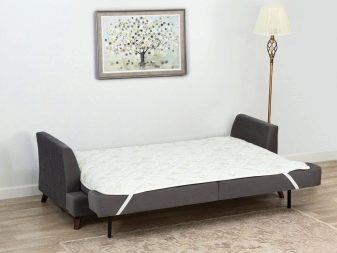


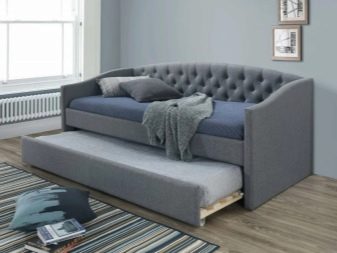
How to choose?
When deciding on a sofa model before buying, please note that the existing variety is caused not only by a wide flight of design imagination, but also by differences in functionality and convenience. In most cases, a compact sofa is purchased for spaces where there is not too much free space, which means that it is reasonable to choose it in an option that is convenient for daily use, and not just “on holidays”. First, understand why you are purchasing furniture. - is it just for sitting during the day or will it be necessary to sleep on it, moreover, regularly.
In most cases, this question can be formulated differently - will the design provide for a transformation mechanism or not.
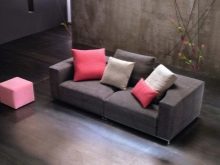


A sofa by all descriptions is more rigid than a sofa, however the concept of rigidity can be stretchable. In addition, the choice of material influences other parameters, for example, the durability of the upholstery and the ease of maintenance. Experts advise purchasing furniture with removable covers. - then problems with their washing will definitely not arise.
If this is not possible, pay attention to the flock upholstery - it is relatively inexpensive, but at the same time it has good performance characteristics. Remember that in case of the necessary savings on the purchase, you can still hold back the money by taking furniture with a more modest (but no less reliable!) Upholstery, but in no case should you save on the quality of the internal springs.


Another fundamentally important point is the brand... When determining the optimal model, many consumers start from the logic that a particular sofa is produced by a well-known furniture factory, whose samples are "in all good houses." It should be understood that the promotion of a brand name also costs money, and if successful, the manufacturer will not think to reduce prices, since the products are already bought.We will not argue that the leading brands have bad furniture - let's just say that the more modest firms can have a sofa no worse, but at the same time cost significantly less.



When purchasing a sofa, never do not rely on the recommendations of friends and acquaintances (each person has their own preferences), and even more so on advertising promises, because each manufacturer predictably tells that his furniture is the most comfortable and durable. Before buying, you are obliged to acquire your own opinion, and for this you need to touch the upholstery, sit and even lie down on a potential acquisition. In a "real" store, consultants should objectively allow such testing, but when buying online, you run the risk of overshooting with a choice.



Design products seem to someone not so much a matter of principle, but it is unacceptable for a brand new sofa to look like a foreign object in the interior. Sheathing choose in accordance with the stylistic design of the room in which the place for the sofa is chosen.
Please note that bright accents in the form of pillows of a different color, and, in general, any bright palette is a solution purely for the living room, but in the bedroom you should give preference to softer tones that do not interfere with normal sleep.


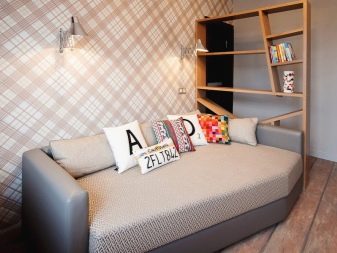
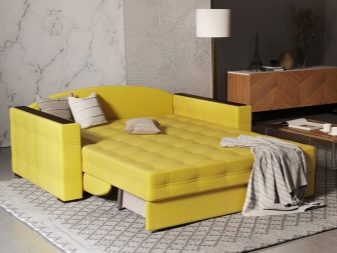
Where to put it?
The modern sofa is very good for its compactness - due to its modest size, it can be inserted into almost any place where the owners of the dwelling and their guests are used to relaxing, whether it is a living room, an entrance hall or even a balcony. At the same time, modern models of such furniture are already laid out more efficiently and are distinguished by increased softness, due to which you can also use the sofa for sleeping - then it is also used with equal success in the bedroom or nursery. In a limited space, such a solution looks very reasonable and appropriate.



The beauty of the sofa is that it not only functional, but also adds a touch of comfort to the interior. Modern designer models look quite unusual, therefore, being correctly selected, they can fit into any design and look organic at the same time. It is the sofa that is the type of leisure furniture that goes well with both classics and hi-tech.

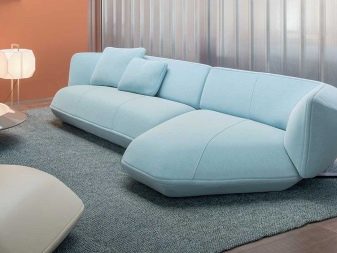
The sofa can be placed even in the room where, in addition to it, there is already a sofa. In this case, it must be remembered that they belong to the general category of furniture, therefore the "roll call" between them should be obvious - both stylistically and in color.
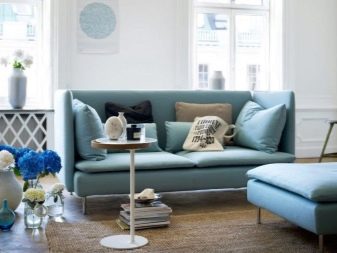

As for the general rules for fitting a sofa into the interior of a room, they are similar to those that are relevant for any other types of furniture. Pay attention to the smallest details, including not only color and shape, but even material - classic patterns on upholstery fabrics will be completely out of place in modern styles and vice versa. And also do not forget that the sofa is not just a decoration, it fulfills a certain function, and therefore its seat must be large enough to provide the required number of seating places for guests.


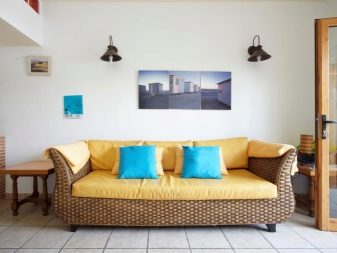

Examples in the interior
The photo clearly shows that a sofa can be not only a place for a comfortable stay, but also a full-fledged decoration of the room. The classic interior is presented here at its best - although it is rather restrained, it is clear that the furniture was chosen with a clear emphasis on demonstrating chic and high cost. It does not stand out from the overall design as a bright spot, but it is still an accent due to its darker tone.

This example is also presses on the classics, but in a slightly different way. If the emphasis is on the use of expensive upholstery materials, then here the theme of wealth is revealed due to the complexity of the carved back - this is clearly designer furniture that you will not find in every second apartment.
Of course, there is no hint of folding here - a rich person is able to afford a normal bed and a separate sofa for daytime relaxation.

In this frame a versatile sofa suitable for most “cozy” styles like Provence, country or even loft. The design of the furniture is emphatically soft, the surface beckons to sit down, creating the feeling that you are at home and you should feel good here. While not looking too expensive, this sofa is certainly not devoid of taste, and in this interior it is also an accent - blue on a white background.

Finally, the last example - triumph of the rigor of modern styles. The minimalistic sofa is not decorated in any way and does not even stand out in color from the general very calm range. But she has a lot of pillows so that the sitting or lying person can be accommodated as it is convenient for him, because modern style requires maximum ergonomics.

For an overview of the Croco sofa from the Daniro factory, see the following video.








